The visual appeal of a website influence up to 94% of a person’s initial impression of its brand, making it crucial for successful e-commerce. To stand out in this competitive industry and leave a lasting impression on potential clients, consider visually appealing and user-friendly navigation. To improve the user experience and encourage conversions, including excellent product images, customer feedback, and personalized instructions. This article delves into a complete guide to website design for ecommerce businesses and provides tips on how to construct an eye-catching website that stands you from the competition and drives revenue.
Importance of Selecting Website Design for Ecommerce Business
Imagine you are looking to purchase a new pair of shoes online. You come across two different ecommerce websites built from Wcart and Shopify platforms, both selling the same type of shoes at a similar price. The Shopify website has a cluttered design with small, low-quality images and a confusing navigation menu. The Wcart website, on the other hand, has a clean and modern design with large, high-quality images and easy-to-use filters for sorting through the available shoes.
Which website would you be more likely to purchase from? Chances are, you would choose the Wcart website with the stunning design. This is the power of website design in ecommerce. A well-designed website can create a positive user experience, build trust with potential customers, and ultimately drive sales. In this example, the Wcart website’s design made it more appealing to customers and helped them stand out from their competition.
Read More: To Know About Dos and Donts of Ecommerce web Design
Understanding the Basics of Website Design for Ecommerce
Let’s look at the basics of website design to assist you boost your ecommerce business.
Visual appeal and first impressions

Visual appeal is crucial for ecommerce websites. Upon landing, users form an immediate impression based on the website’s design, which influences their decision to stay or leave. To make a positive impact, opt for a clean, modern, and eye-friendly design with the right colors, typography, and layout. High-quality media enhances engagement. However, balance aesthetics with functionality. Ensure user-friendliness for easy navigation and a satisfying experience. In summary, visually appealing designs build trust with customers, provided they remain functional and user-friendly.
Navigation and ease of use
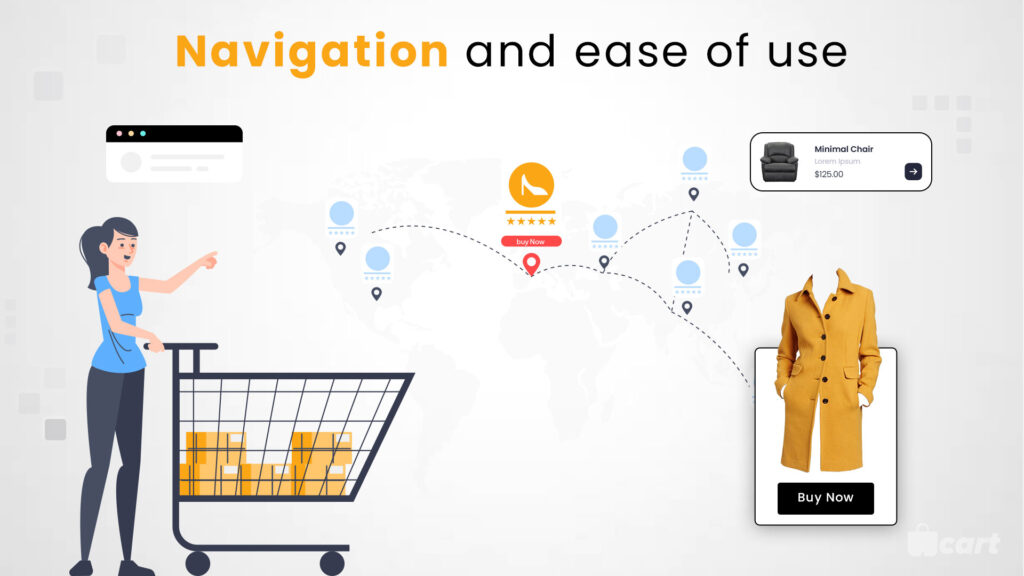
For a successful ecommerce website, visual appeal is important, but equally crucial is the navigation and ease of use. Users should easily find what they want without confusion or frustration. To achieve this, prioritize a clear and logical navigation menu, easily accessible from any page. Organize categories and subcategories sensibly for quick and intuitive searching. Implement effective search functionality with relevant results and straightforward navigation. Additionally, simplify the checkout process with clear instructions and minimal steps to avoid errors or roadblocks. In summary, an easy-to-navigate website is paramount for ecommerce success, with a user-friendly menu, efficient search, and streamlined checkout process.
Branding and messaging

Effective branding and messaging are vital for ecommerce website design. To achieve this, ensure your website reflects your brand and communicates the message clearly to potential customers. Maintain a consistent design throughout your website and marketing materials to establish a strong brand identity, using the same color scheme, typography, and imagery for a cohesive look. Display your logo prominently to help users recognize your brand.
Messaging also plays a crucial role in branding. Make sure your website copy effectively conveys your brand’s message and values to potential customers. Consistency across all materials fosters trust and builds a strong brand identity. Personalization is another key aspect of branding and messaging. Create an engaging and memorable journey by tailoring the user experience based on customer preferences and behavior, which involves personalized product recommendations, targeted messaging, and customized emails. In summary, strong, consistent brand identity and messaging across your website and marketing materials are vital for earning customer trust and delivering a memorable user experience. Personalization further enhances this experience and contributes to a stronger brand identity.
Creating a Stunning Website Design for Ecommerce Business
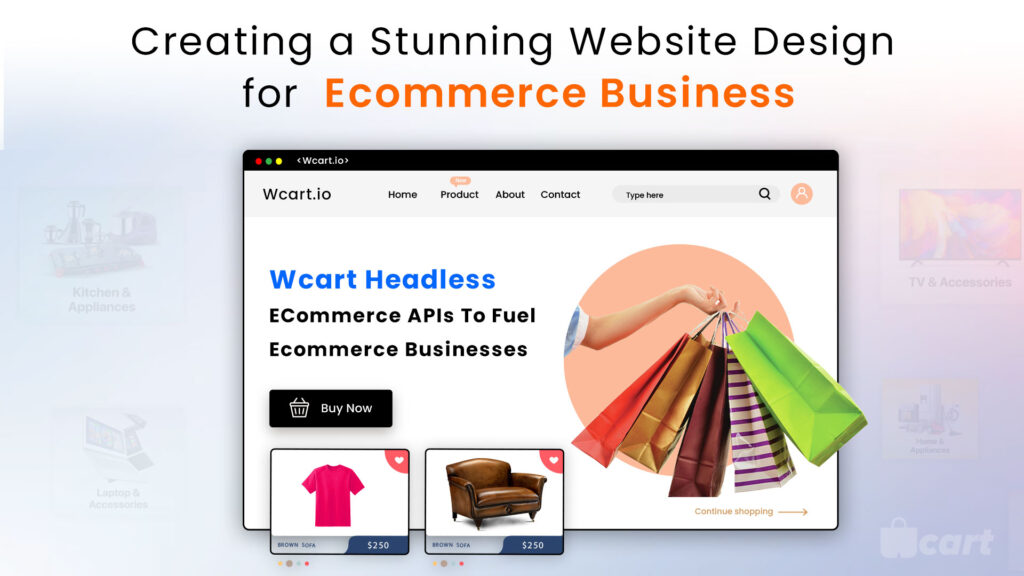
Let us discuss the aspects that must be considered when designing a website.
Choosing the right color scheme
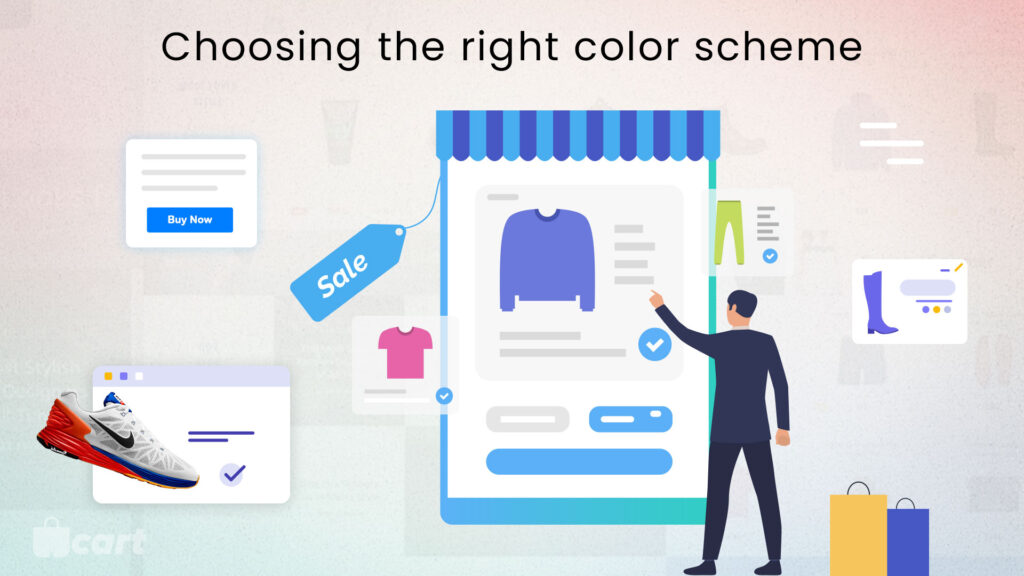
Choosing the right color scheme is an important aspect of website design for ecommerce businesses. Colors can have a significant impact on user behavior and can influence how users perceive your brand and products.
When choosing a color scheme for your website, it’s important to consider your brand identity and the emotions you want to evoke in your users. For example, blue is often associated with trust and reliability, while red can create a sense of urgency and excitement.
It’s also important to choose colors that complement each other and create a cohesive look and feel for your website. Using too many colors or choosing colors that clash can create a chaotic and unprofessional look.
In addition to the main color scheme, it’s also important to consider the use of accent colors to draw attention to important elements on your website, such as buttons or calls to action.
When choosing a color scheme, it’s important to keep in mind the accessibility of your website for users with visual impairments. Using contrasting colors and ensuring that text is easy to read can help to make your website more accessible for all users.
In summary, choosing the right color scheme can have a significant impact on how users perceive your brand and products. It’s important to consider your brand identity, the emotions you want to evoke, and the accessibility of your website when choosing a color scheme.
Selecting the appropriate font
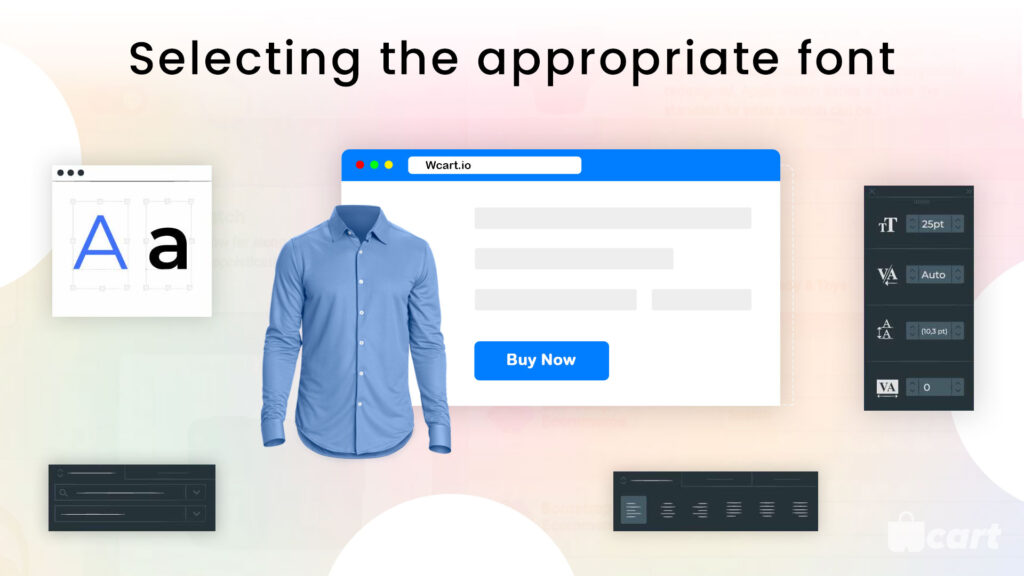
The font is another important element of website design for ecommerce businesses. Choosing the right font can enhance the readability and overall aesthetic of your website.
When selecting fonts for your website, it’s important to consider your brand identity and the emotions you want to convey to users. For example, sans-serif fonts can create a modern and minimalist look, while serif fonts can create a more traditional and classic feel.
It’s also important to choose fonts that are easy to read and visually appealing. Using too many fonts that are difficult to read can create a cluttered and unprofessional look.
In addition to the main font, it’s important to consider the use of different font weights and styles to create a hierarchy and draw attention to important elements on your website, such as headings and calls to action.
When selecting fonts, it’s also important to consider the accessibility of your website for users with visual impairments. Using a font size that is easy to read and ensuring that there is sufficient contrast between the text and background can help to make your website more accessible for all users.
In summary, selecting the appropriate font is an important aspect of website design for ecommerce businesses. It’s important to consider your brand identity, readability, and accessibility when selecting fonts and styles.
Implementing high-quality product images and videos
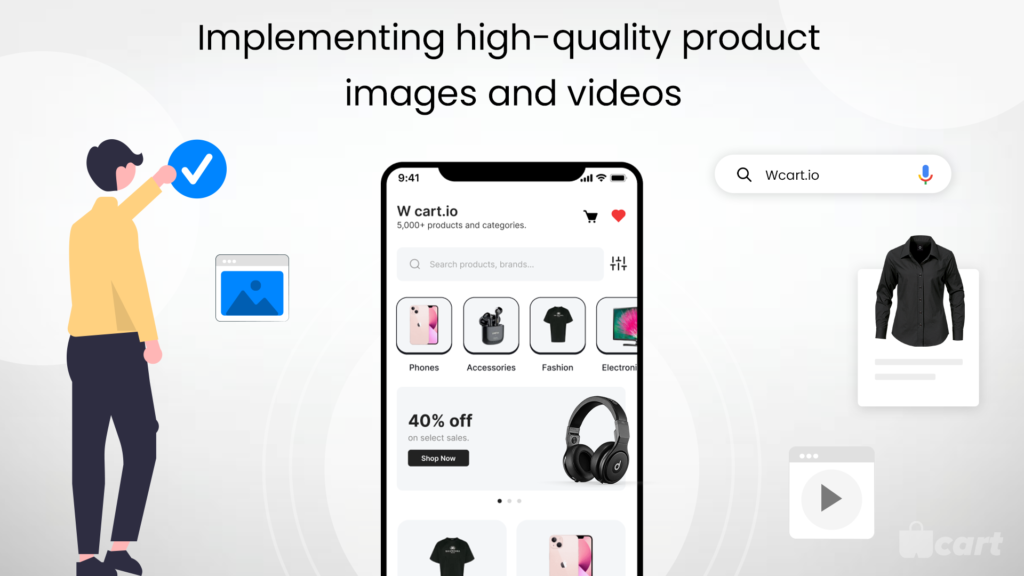
High-quality product images and videos are essential for ecommerce websites as they can significantly impact the user’s decision to make a purchase. High-quality images and videos provide users with a better understanding of the product, its features, and its benefits.
When implementing product images and videos on your website, it’s important to ensure that they are high-quality and visually appealing. This includes using high-resolution images that showcase the product in different angles and lighting. Using images with a zoom feature can also help users to get a closer look at the product.
In addition to images, videos can also be used to provide users with a better understanding of the product. Videos can showcase the product in action and provide users with a better understanding of how the product works. This can help to build trust with users and increase the likelihood of a purchase.
It’s also important to ensure that the product images and videos are consistent with your brand identity and messaging. This includes using a consistent color scheme, typography, and imagery across all product images and videos.
Finally, it’s important to ensure that the product images and videos are optimized for web use. This includes compressing the file size to ensure fast load times, and using alt tags to improve search engine optimization.
In summary, implementing high-quality product images and videos is essential for ecommerce websites. It’s important to ensure that the images and videos are visually appealing, consistent with your brand identity, and optimized for web use. This can help to increase user engagement and the likelihood of a purchase.
Ensuring fast page loading speeds
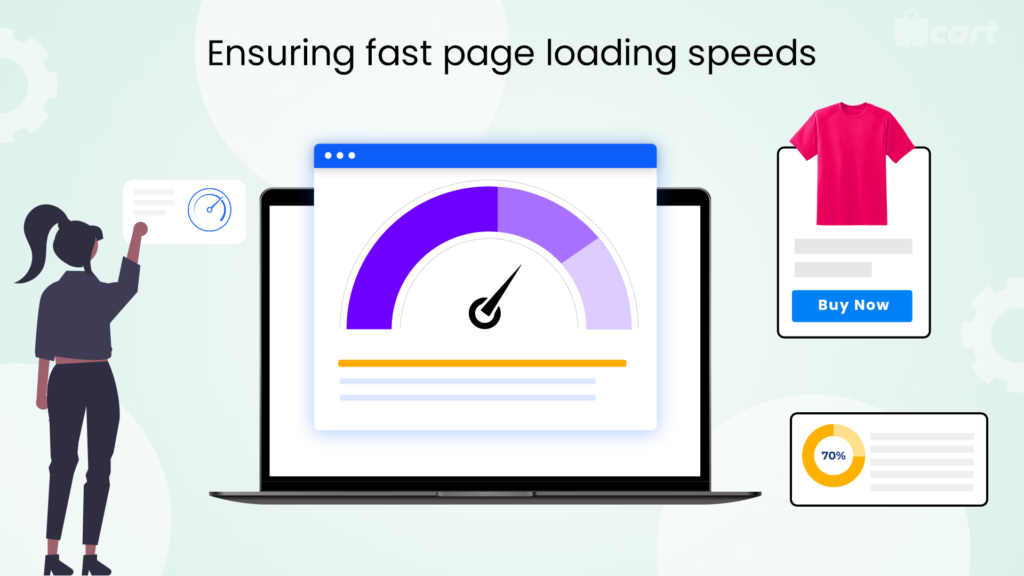
Fast page loading speeds are crucial for ecommerce websites as they can impact user experience and the likelihood of a purchase. Slow loading speeds can lead to user frustration and an increased likelihood of users leaving your website before making a purchase.
To ensure fast page loading speeds, there are several steps that can be taken. One of the most important is optimizing image sizes and file types. This includes compressing images and using appropriate file types, such as JPEG or PNG, to ensure fast load times.
Another way to improve page loading speeds involves reducing the number of HTTP requests. You can achieve this by combining CSS and JavaScript files and utilizing code minification to decrease file sizes.
It’s also important to use a reliable hosting provider with fast server response times. Slow server response times can significantly impact page loading speeds and user experience.
Finally, implementing a content delivery network (CDN) can help to improve page loading speeds by distributing content across multiple servers around the world, reducing the distance between the user and the server.
Overall ensuring fast page loading speeds is crucial for ecommerce websites. This can be achieved by optimizing image sizes and file types, reducing the number of HTTP requests, using a reliable hosting provider, and implementing a content delivery network. Fast page loading speeds can improve user experience and increase the likelihood of a purchase.
Best Practices for Website Design in Ecommerce
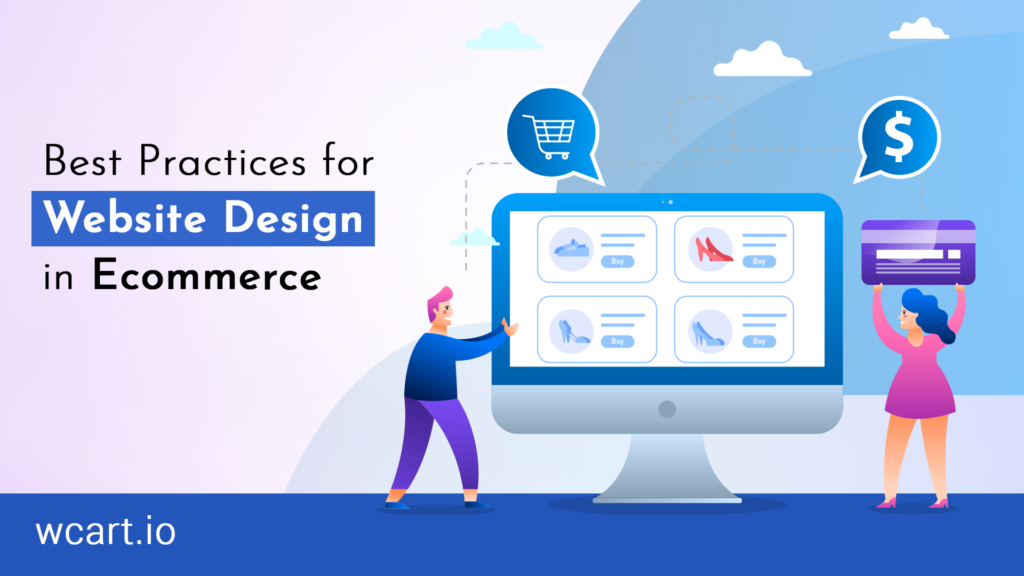
Here are some ideas for designing your website.
Simplifying the checkout process
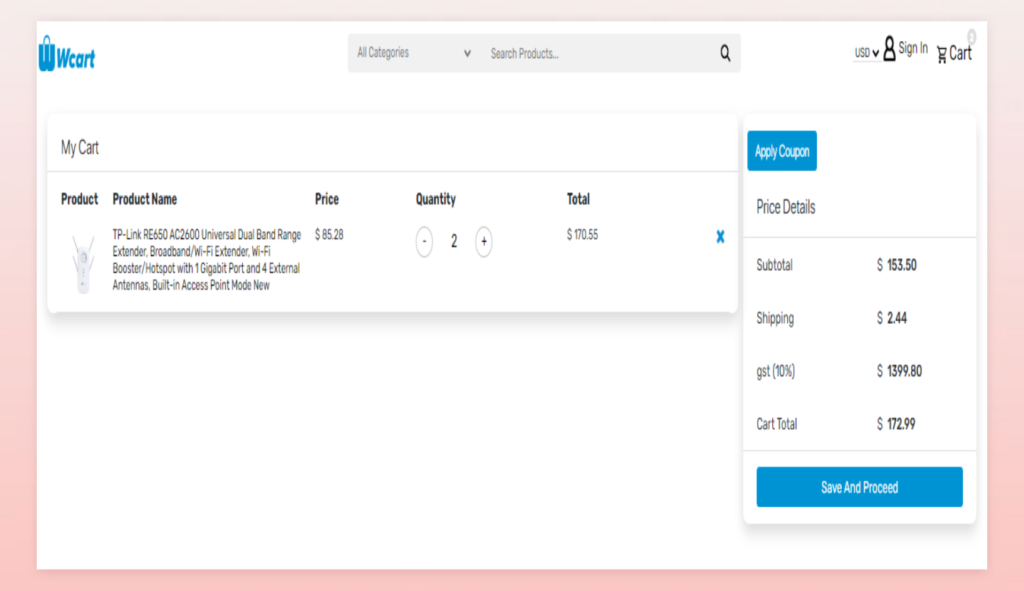
The checkout process is a critical component of ecommerce websites, as it is the final step in the user’s journey towards making a purchase. A complicated and confusing checkout process can lead to cart abandonment and lost sales. Therefore, it’s essential to simplify the checkout process to ensure a seamless and user-friendly experience.
One of the most effective ways to simplify the checkout process is by reducing the number of steps required to complete the purchase. This goal can be achieved by minimizing the number of form fields and eliminating any unnecessary steps, such as making it a requirement for users to create an account before they can make a purchase.
It’s also important to provide users with clear and concise instructions throughout the checkout process. This includes providing users with an overview of the steps required to complete the purchase, as well as clear instructions for each step.
Finally, it’s important to optimize the checkout process for mobile devices.
With more users accessing ecommerce websites through mobile devices, businesses must optimize the checkout process for mobile with a design that is mobile-friendly and an interface that is easy to use.
In summary, simplifying the checkout process is crucial for ecommerce websites. This can be achieved by reducing the number of steps required to complete the purchase, providing multiple payment options, providing clear instructions, and optimizing the checkout process for mobile devices. A simplified checkout process can help to increase conversions and reduce cart abandonment.
Providing multiple payment options
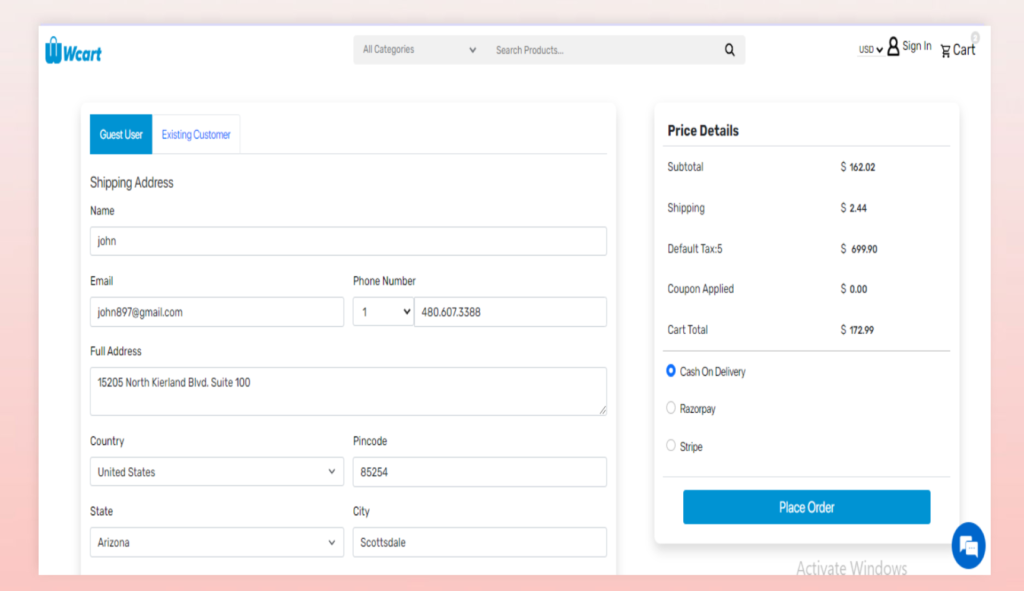
One of the key factors that can impact a user’s decision to make a purchase on an ecommerce website is the availability of multiple payment options. Providing users with a variety of payment options can increase the chances of a successful transaction, as users are more likely to complete a purchase if they have access to a payment method that they are comfortable using.
Common payment options that should be considered include credit cards, debit cards, PayPal, Apple Pay, and Google Pay. It’s important to research and understand the payment options that are popular in your target market, as this can vary depending on the location and demographics of your target audience.
It’s also important to ensure that the payment process is seamless and easy to use. This entails providing users with clear and concise instructions for each payment option and ensuring the seamless integration of the payment process into the checkout process.
Another factor to consider is the security of the payment process. Users should trust that their personal and financial information is in secure hands. To achieve this, businesses can implement secure payment gateways and SSL certificates, as well as display security badges and logos on the website to reassure users.
In summary, providing multiple payment options is crucial for ecommerce websites. This can increase the likelihood of successful transactions and improve the overall user experience. Payment options should be chosen based on the target market and demographics, and the payment process should be seamless, easy to use, and secure.
Displaying customer reviews and ratings
Displaying customer reviews and ratings on an ecommerce website can be a powerful tool for increasing customer trust and driving sales. User-generated content such as customer reviews and ratings can provide valuable insights into the quality of products, as well as the overall shopping experience on the website.
One of the primary benefits of displaying customer reviews and ratings is that it can help to build trust with potential customers. Customers are more likely to make a purchase if they see positive reviews from other customers who have purchased and used the product before.
In addition to building trust, customer reviews and ratings can also provide valuable feedback for businesses. This feedback can be used to identify areas for improvement and to make changes to products or services based on customer feedback.
When displaying customer reviews and ratings on an ecommerce website, it’s important to ensure that they are authentic and trustworthy. This can be achieved by implementing measures to prevent fake reviews and ensuring that reviews are verified by actual customers.
It’s also important to provide users with the ability to filter and sort reviews based on specific criteria, such as the date of the review or the rating given. This can help users to quickly find the information they are looking for and make an informed decision.
Finally, it’s important to respond to customer reviews, both positive and negative. This shows that the business values customer feedback and is committed to providing excellent customer service.
Offering personalized product recommendations
Personalized product recommendations are a powerful tool for increasing sales on an ecommerce website. By analyzing user behavior and purchase history, businesses can provide personalized recommendations for products that are likely to be of interest to each individual user.
There are several benefits to offering personalized product recommendations. Firstly, personalized recommendations can increase the likelihood of a user making a purchase by providing them with relevant and targeted product suggestions. This can lead to increased sales and revenue for the business.
Personalized recommendations can also improve the overall user experience by providing users with a more personalized and tailored shopping experience. Users are more likely to return to a website that provides them with relevant and useful product suggestions.
To offer personalized product recommendations, businesses need to collect and analyze user data. This can be done through various means, such as tracking user behavior on the website or collecting data through surveys or questionnaires.
It’s important to ensure that the recommendations provided are relevant and useful to the user. To achieve this, the company can regularly analyze and update the recommendation algorithms, while also enabling users to provide feedback on the recommendations.
In summary, offering personalized product recommendations can be a powerful tool for increasing sales and improving the overall user experience on an ecommerce website. Businesses need to collect and analyze user data to provide personalized recommendations, and should ensure that the recommendations provided are relevant and useful to the user.
Maximizing the Impact of Your Website Design

Let’s talk about how to enhance the impact of your ecommerce website design.
Utilizing data analytics to track performance

Data analytics is a crucial tool for ecommerce businesses to track their website’s performance. By collecting and analyzing data, businesses can gain insights into user behavior, website traffic, and sales trends. This information can be used to make informed decisions about website design, marketing strategies, and product offerings.
Data analytics can provide businesses with a wealth of information, such as the number of website visitors, how long they stay on the website, which pages they visit, and which products they purchase. This information can be used to identify trends and patterns, as well as areas for improvement.
Businesses can use data analytics to track the performance of various website elements, such as page loading speeds, checkout processes, and product pages. By identifying areas that are causing users to drop off or abandon their carts, businesses can make necessary changes to improve the overall user experience and increase sales.
Data analytics can also be used to track the effectiveness of marketing campaigns. By tracking metrics such as click-through rates and conversion rates, businesses can determine which marketing channels and campaigns are driving the most traffic and sales.
In summary, utilizing data analytics is essential for ecommerce businesses to track website performance and make informed decisions about website design, marketing strategies, and product offerings. By collecting and analyzing data, businesses can identify trends, patterns, and areas for improvement, and make necessary changes to improve the overall user experience and increase sales.
Conducting A/B testing to optimize design elements
A/B testing is a method of comparing two versions of a website or webpage to determine which performs better. By testing different design elements, such as layout, color, or wording, businesses can identify which version results in better user engagement and conversion rates.
A/B testing allows optimization of various design elements on an ecommerce website, including button placement, checkout button color, and product description wording. By testing different versions of these elements, businesses can determine which version leads to higher sales and engagement.
To conduct A/B testing, businesses need to create two versions of the design element they want to test. They can then randomly display each version to a group of users and track the performance of each version using analytics tools.
It’s important to ensure that A/B testing is conducted properly, with a large enough sample size and a clear hypothesis to test. A/B testing can also be time-consuming and may require multiple iterations to achieve significant results.
In summary, conducting A/B testing is a valuable tool for optimizing design elements on an ecommerce website. By testing different versions of design elements, businesses can identify which version leads to better user engagement and conversion rates. To ensure proper A/B testing, it is crucial to conduct the testing with a clear hypothesis to be tested and a large enough sample size.
Continuously updating and improving your website
Updating and improving your ecommerce website is crucial to ensure its success in the long run. It’s important to regularly review and analyze website metrics and user feedback to identify areas for improvement.
There are several ways to continuously update and improve your website. One approach is to regularly add new content, such as product updates, blog posts, and customer reviews. This helps to keep the website fresh and engaging for users.
Another approach is to regularly test and optimize website elements, such as the checkout process, navigation, and product pages.One can use A/B testing to compare different versions of a webpage and determine which version performs better.
It’s also important to stay up-to-date with the latest website design trends and technologies. This can help to improve the overall user experience and keep the website competitive.
Regularly monitoring and analyzing website metrics, such as bounce rates, conversion rates, and page load times, can help to identify areas for improvement and ensure that the website is performing at its best.
In summary, continuously updating and improving your ecommerce website is essential to its success. Regularly adding new content, testing and optimizing website elements, and staying up-to-date with the latest trends and technologies can help to improve the user experience and drive sales.
Conclusion
A stunning website design is essential for the success of an ecommerce business. A visually appealing website with easy navigation, clear branding and messaging, high-quality images and videos, and a simple checkout process can help to improve the user experience and increase sales.
By continuously updating and improving the website, businesses can stay competitive and ensure their long-term success. Good Luck!
Frequently Asked Questions(FAQs)
What are the essential design elements for an ecommerce website?
A successful ecommerce website should have a clear and organized layout, easy-to-use navigation, high-quality images, detailed product descriptions, a seamless checkout process, secure payment options, mobile compatibility, and fast loading speeds.
How can I optimize my ecommerce website for search engines?
To optimize your ecommerce website for search engines, you should conduct keyword research and integrate those keywords into your product descriptions, meta tags, and page content. You should also make sure your website has a clear and organized structure, with proper header tags and internal linking.
What are some best practices for designing a mobile-friendly ecommerce website?
When designing a mobile-friendly ecommerce website, it’s important to prioritize simplicity and ease of use. This means using a clear and legible font, using large and easy-to-tap buttons, and minimizing the amount of text and images on each page. Prioritize website speed and optimize it for various mobile devices sizes.
How can I create an effective product page?
To create an effective product page, you should use high-quality images and videos to showcase the product, include a clear and concise product description, list the product features and benefits, provide customer reviews and ratings, and clearly display pricing and shipping information. You should also include a call-to-action button that prompts customers to add the product to their cart.
What are some design trends to consider for ecommerce websites?
Some design trends to consider for ecommerce websites include using minimalist design with plenty of white space, incorporating bold and bright colors, using asymmetrical layouts, and incorporating video backgrounds. You should also consider implementing personalized product recommendations, chatbots, and social proof elements such as customer reviews and ratings.
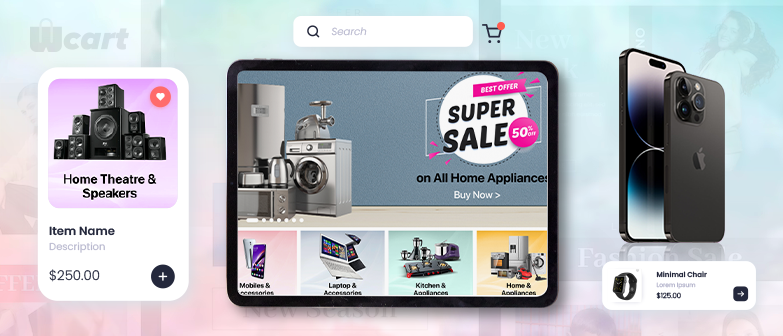



Leave a Reply